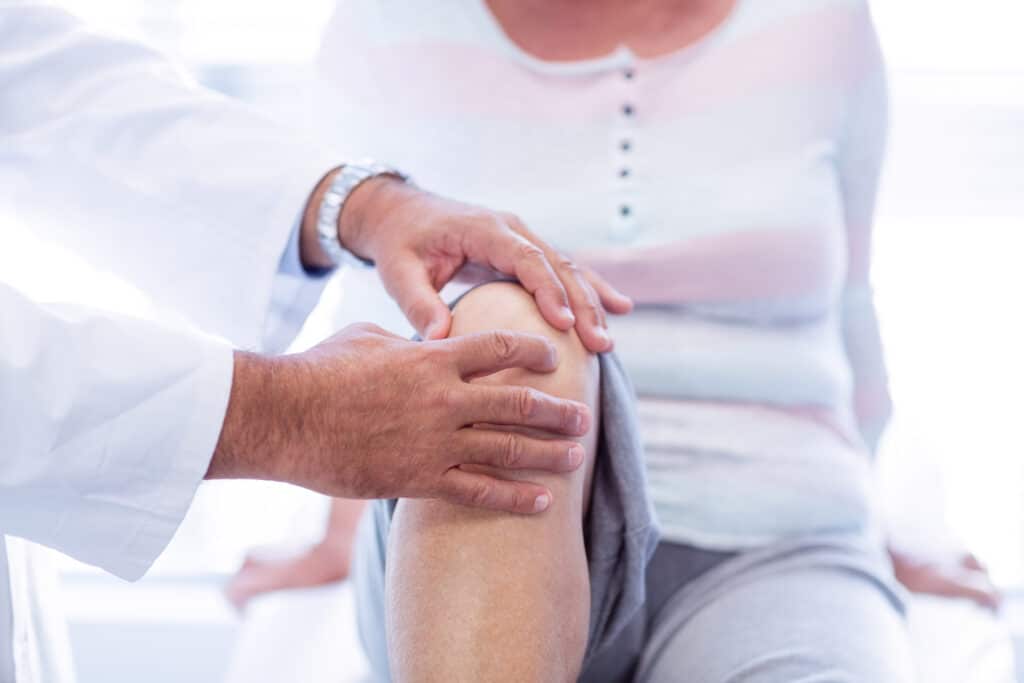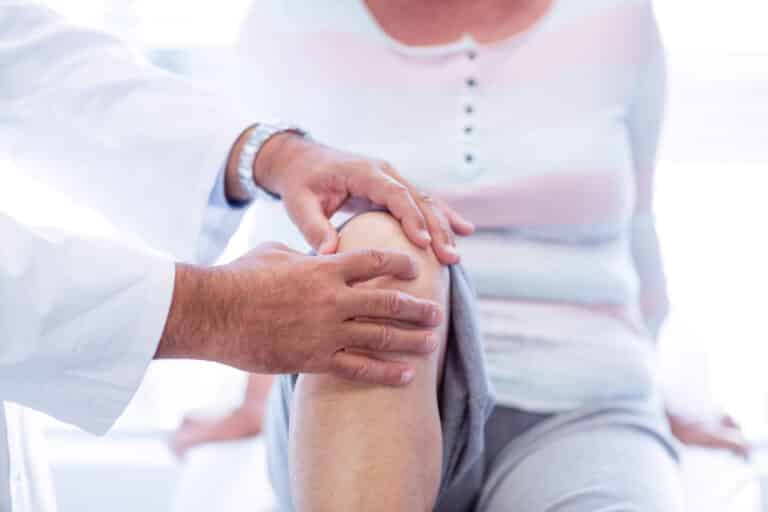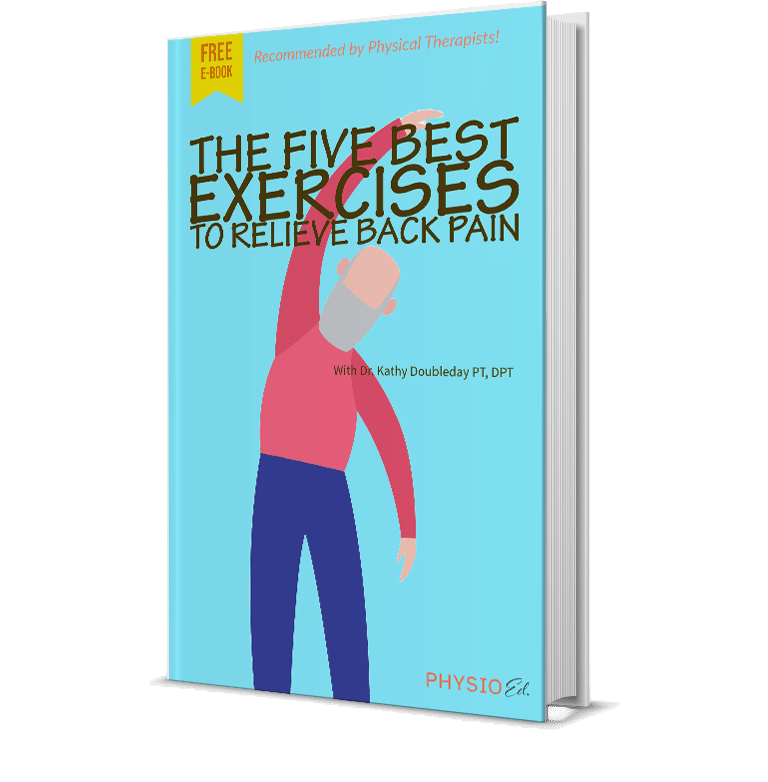Does knee pain or stiffness seriously limit your daily activities? If so, you may be considering knee replacement surgery.
Knee replacement surgery, also known as total knee arthroplasty, is a surgical procedure that replaces the damaged parts of your knee joint with artificial implants. In most cases, knee replacement relieves pain, improves mobility, and restores knee function.
While knee replacement can offer many benefits to older adults, it’s also a major surgery involving risks and complications that must be considered. As a physical therapist who’s helped many people recover from knee replacement, I’m passionate about helping older adults understand the potential pros and cons of this type of surgery.
One of the most common questions I get from patients about knee replacement is how long it takes to recover from the surgery. Although the answer isn’t always simple, some general expectations can be set to help you better predict how your recovery will go.
In this article, I’ll share information on the general recovery timeline after a knee replacement surgery, the importance of physical therapy during your recovery, and lifestyle tips to make the most of your knee replacement long-term.
A General Recovery Timeline
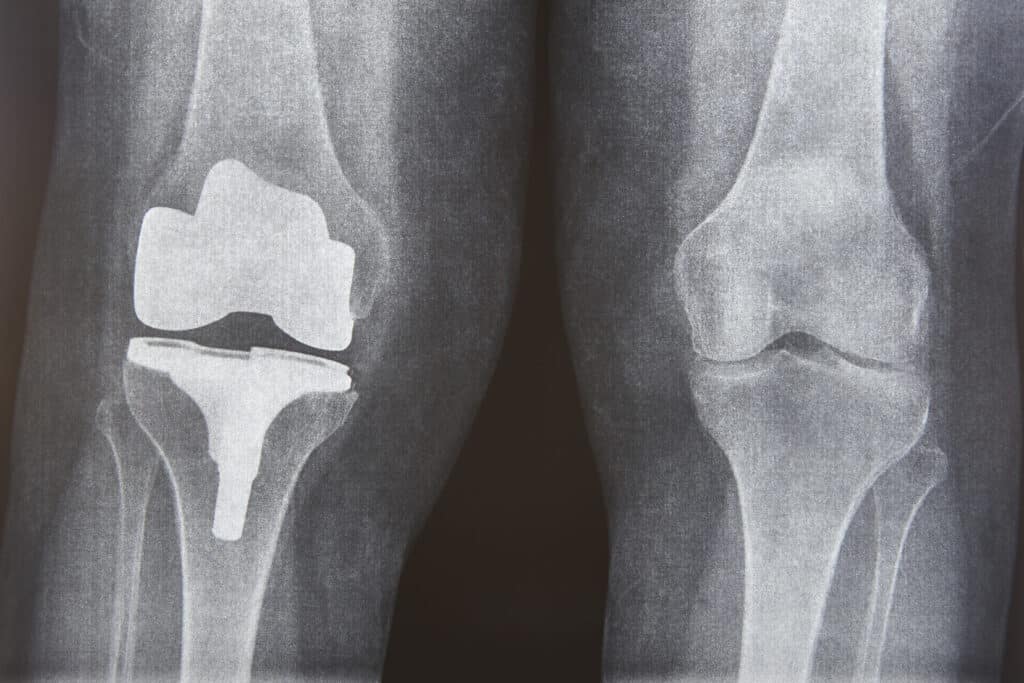
The recovery timeline after a knee replacement can vary from person to person, depending on age, health, activity level, and compliance with therapy. However, in general, you can expect to go through three stages of recovery.
Immediate Post-operative (Week 1)
The immediate post-operative stage lasts from the day of surgery until about one week after. Remember that one week is an estimate and that this stage may be longer or shorter depending on your condition and the type of surgery you had.
Before you leave the hospital, you will be given instructions on how to care for your wound, how to manage your pain and swelling, how to prevent infection, and when to follow up with your doctor.
During the immediate post-operative stage, you will experience considerable pain, swelling, and stiffness in your knee. After surgery, you will also have a dressing and a drain tube to prevent infection and bleeding. To prevent complications, protocols such as the Enhanced Recovery After Surgery (ERAS) system are used before and after your surgery to provide consistent outcomes and optimize safety.1
In brief, ERAS is a predetermined set of guidelines that hospitals and care teams use to ensure the most optimal recovery time (and shortest hospital stay) for surgery patients. It includes steps for:
- Education of patient and family about the process
- Guidelines for pre-and post-operative analgesia, pain management and nutrition
- A general outline of parameters to improve recovery starting before the procedure.
Shortly after surgery, you will be recommended to start physical therapy. During physical therapy, you will learn how to move your knee safely, use a walker or crutches for weight support, transfer between different positions, and perform basic activities such as dressing and bathing.
In my experience, this is the most challenging stage of recovery for most patients. The biggest reason for this is pain, difficulty performing daily activities, and lack of independence, which is far worse compared to later stages of recovery.
Early Recovery (Weeks 2-12)
The early recovery stage lasts from the end of your immediate post-operative phase until about twelve weeks after surgery. This stage is crucial for restoring strength, range of motion, and stability to your knee.
You will continue physical therapy at home or at an outpatient clinic during this stage. During physical therapy, you’ll focus on exercises to improve your knee function and mobility, such as resisted knee strengthening, walking, climbing stairs, and cycling.
The eventual goal of early recovery is to resume your normal activities gradually. While it takes time, returning to your regular walking patterns and limiting using an assistive device will become progressively more attainable.
By the end of this stage, you should be able to drive, work, travel, and do your everyday household chores without pain. Although your surgeon may not recommend running and jumping after a total knee replacement, movements such as squatting and kneeling should feel comfortable toward the end of this stage.
While many of my patients find this stage more tolerable than the immediate post-operative stage, it’s still a lot of work. To get the best results possible, you’ll need to put in consistent effort every week and regularly push through discomfort to make progress.
Late Recovery (Week 12 and Beyond)
The late recovery stage lasts about twelve weeks after surgery until about one year. This stage is essential for maximizing your function and achieving the best possible outcome from your knee replacement.
During this stage, you may or may not continue physical therapy until you reach your optimal level of function and mobility. Most importantly, you will continue with a regular exercise program to optimize strength, endurance, balance, coordination, and flexibility in your leg.
The biggest highlight of this stage is gradually returning to your hobbies and recreational activities. You can participate in biking, hiking, and your favorite sports with the right training program.
Many of my patients report slow, gradual changes in their knee condition after three months. For this reason, it’s imperative to make significant strides in your recovery during those first three months. Then, focus on small, gradual changes in the months and years after.
What to Expect During Physical Therapy
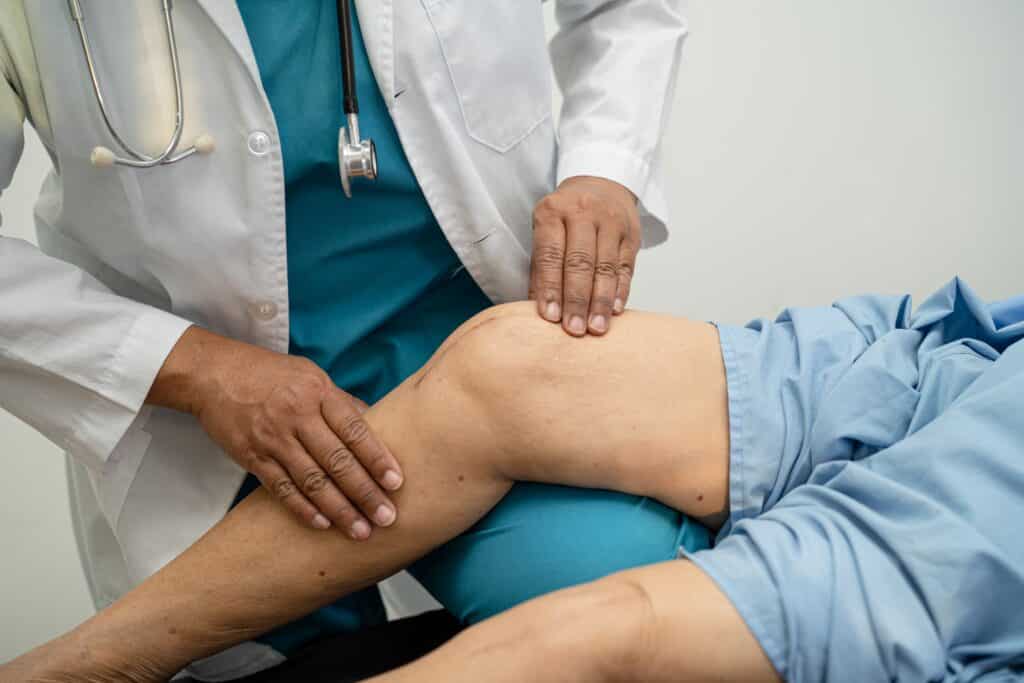
Physical therapy is an essential part of recovery after knee replacement. Therapy helps you restore strength, range of motion, and stability to your knee.2
Regular physical therapy is also vital to help reduce complications, scar tissue formation, and muscle atrophy.
Physical therapy usually starts as soon as possible after surgery, either in the hospital, at home, or in a traditional clinic. While in therapy, you will work with a physical therapist who will design a personalized exercise program for you based on your goals, condition, and progress.
The primary focus of therapy throughout your recovery is to optimize function through pain management, targeted exercises, and progressive movement training. Your personal program may also involve activities and practices to improve your overall fitness, such as aerobic, strengthening, and stretching exercises for your whole body.
Here are some examples of exercises that you can do at home or with a therapist during each stage of knee replacement recovery.
Immediate Post-operative Phase
Ankle Pumps
- Sit up on a couch another flat surface with your legs straight.
- Move your ankles up and down as if you are pumping a pedal.
Quad Sets

- Lie on your back with your legs straight.
- Tighten the muscles on the front of your thigh by pressing the back of your knee into the bed, table, or towel roll.
- Hold for 3-5 seconds and relax.
Heel Slides
- Lie on your back with your legs straight.
- Bend your knee and slide your heel toward your buttock as far as possible.
- Hold it briefly, then slide it back to the starting position.
Early Recovery Phase
Sit-To-Stand
- Begin seated in a chair with your hands on your thighs.
- Leaning your nose over your toes, stand up from the chair while using your hands as little as possible.
- Slowly lower yourself back into the chair and repeat.
Single Leg Balance
- Begin standing in front of a counter with your arms supported.
- Slowly bend one knee so that you are standing on your surgical leg.
- Hold the position as long as you comfortably can, then rest and repeat.
Late Recovery Phase
Single Leg Banded Clock
The exercise is slightly more complex, but is particularly useful in later stages of recovery.
- With a band around your lower thighs, begin standing behind a sturdy chair or some other stable surface.
- Bend at the knees and hips, with a slight forward lean.
- With one foot, reach to the side, then diagonally backward, then backward, returning to the two-footed standing position between each repetition.
- Repeat on the other leg. Complete five repetitions (all three directions) on each leg.
We would like to note that this is a complicated movement. Please see the video above for a detailed description for how to execute this movement optimally.
Banded Squat
- Begin standing tall with a band around your lower thighs.
- Slowly bend at your hips and knees until your thighs are close to parallel with the floor—or as far as you comfortably can.
- Pause briefly at the bottom, then stand up tall.
- Repeat for 8-10 repetitions, then rest.
These are just some examples of exercises that you can do after knee replacement. In my experience, nearly every patient will need different exercises depending on their needs and abilities.
While physical therapy can help you achieve the best possible results from your knee replacement surgery, it can also be challenging and cause short-term discomfort.
Here are some tips for managing pain and swelling during your recovery:
- Apply ice packs to your knee for 10 to 20 minutes before or after exercise to control inflammation and numb pain.
- Keep your leg elevated above the level of your heart when resting or icing to reduce swelling.
- Take pain medication as your doctor prescribes before or after exercise to manage discomfort when needed.
- Listen to your body and adjust your exercise as needed. If you feel too much pain or discomfort, stop or reduce the intensity of the exercise.
Lifestyle Modifications to Improve Your Recovery
When recovering from a knee replacement, there are lifestyle changes that you can make in your daily activities to facilitate recovery and prevent complications. Lifestyle modifications can help reduce pain and discomfort, protect your implant from damage, and improve your long-term results.
Three lifestyle modifications to focus on include modifying your home environment, gradually resuming your everyday activities, and maintaining a healthy lifestyle.
Modifying Your Home Environment
Modifying your home environment can make your living space safer and more accessible immediately after knee replacement.
Here are some simple yet effective suggestions for modifying your home environment:
- Remove rugs, cords, and clutter from the floor to prevent tripping and slipping.
- Use a raised toilet seat, shower chair, or a long-handled sponge to make it easier to use the bathroom and shower.
- Use a reaching tool or a long-handled shoe horn to help you pick up things from the floor and put on your shoes without forcing uncomfortable positions.
- Arrange your furniture and belongings to be within easy reach and not require too much bending or twisting.
- Arrange for all your things to be on the house’s first floor if possible, as stairs may be a significant challenge immediately post-op.
Keep in mind that most of these changes are temporary. As you progress in your recovery, you will no longer need to depend on these strategies to maintain mobility and stay safe in your home environment.
Resuming Your Normal Activities Gradually
Gradually resuming your normal activities will help you regain independence and confidence after knee replacement.
Here are some guidelines for resuming your normal activities:
Driving
You can resume driving when you can bend your knee enough to get in and out of the car when you are off pain medication that might impair your judgment, and when you feel confident behind the wheel. This may take several weeks or months after surgery. Still, it ultimately depends on the opinion of your doctor or physical therapist.
Working
You can continue your regular work when ready to perform your duties. This depends on your work type and the required physical activity level. Still, many older adults prefer to arrange for modified work duties that require less bending and lifting or more rest breaks throughout the day.
Traveling
You can return to traveling when you feel comfortable sitting for long periods, walking long distances, and carrying bags or luggage. This might mean planning ahead or making special arrangements for your travel, such as booking an aisle seat or requesting assistance at the airport.
It’s also a good idea to allocate time for movement breaks on long drives to avoid feeling stiff. Being stuck in one position for too long can prevent adequate blood flow. Standing up and moving your knees and the rest of your body can break up your drive and offer much-needed mobilization for your joints.
In my experience working with older adults recovering from a total knee replacement surgery, each week differs from the next. For this reason, it’s essential to maintain an ongoing conversation with your doctor or physical therapist to make safe decisions about driving, working, and traveling.
Maintaining a Healthy Lifestyle
Regardless of your surgery, maintaining a healthy lifestyle can help you improve your overall health and well-being in the long term.
Here are a few wellness tips to help you optimize your health while recovering from a total knee replacement:
- Eat a well-balanced diet that provides enough nutrients for healing and bone health. For many, this means eating more calories than you might be used to give your body the energy it needs to recover fully.
- Drink plenty of water to stay hydrated, maintain normal energy levels, and improve your recovery from exercise. For most older adults, this means avoiding drinks high in caffeine, alcohol, or sugar, which can dehydrate you or interfere with your body’s natural healing process.
- Avoid alcohol and smoking cigarettes before and after surgery. Smoking can impair blood circulation, delay wound healing, and increase your risk of infection. Alcohol can interact with pain medication, impair blood clotting, and suppress liver function.3
With the proper lifestyle modifications and self-care habits, you can improve your body’s natural healing process after total knee replacement and prevent complications.
Key Takeaways
- Knee replacement is a routine, major surgery that can relieve pain, improve mobility, and restore function to your knee.
- Recovery time from total knee replacement varies depending on many factors. Still, there are three general stages of recovery: immediate post-operative, early recovery, and late recovery.
- Physical therapy is essential for restoring strength, range of motion, and stability to your knee after surgery. Gradual progression of exercise and physical activity are critical to your long-term success.
- You can make lifestyle modifications to facilitate your recovery and prevent complications, including adjusting your home environment, gradually progressing your activity, and maintaining healthy nutrition habits.
- For best results, always follow your surgeon’s and physical therapist’s instructions and seek help if you have any concerns about your recovery.
References
- Choi YS et al. Enhanced recovery after surgery for major orthopedic surgery: a narrative review. Knee Surg Relat Res. 2022;34(1):8. https://doi.org/10.1186/s43019-022-00137-3
- Artz, N., Elvers, K. T., Lowe, C. M., Sackley, C., Jepson, P., & Beswick, A. D. (2015). Effectiveness of physiotherapy exercise following total knee replacement: systematic review and meta-analysis. BMC musculoskeletal disorders, 16, 15. https://doi.org/10.1186/s12891-015-0469-6
- Rodriguez-Merchan EC. The importance of smoking in orthopedic surgery. Hosp Pract (1995). 2018;46(4):175-182. doi:10.1080/21548331.2018.1505406

